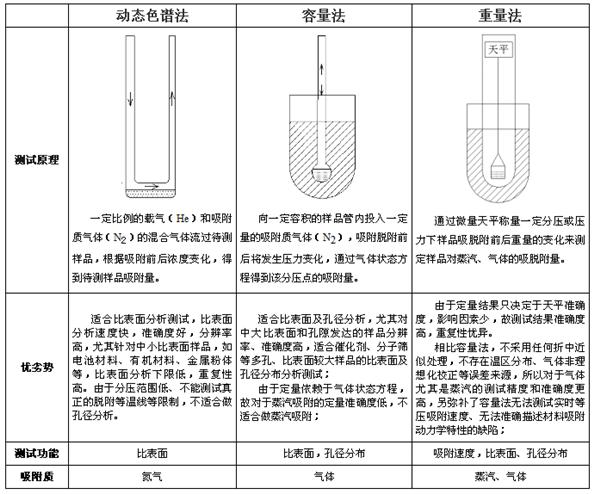What are the experimental techniques for physical adsorption measurement? Physical adsorption is a technique used to study how gases or vapors interact with solid surfaces. The primary goal of such measurements is to determine the relationship between the amount of gas adsorbed and the pressure at a specific temperature, which is typically represented by an adsorption isotherm curve. The two main methods used in physical adsorption analysis are gravimetric and volumetric techniques. Gravimetric analysis involves using a highly sensitive microbalance to measure the mass change of a sample as it adsorbs gas. This method also requires correction for buoyancy effects, which can be challenging. It's particularly useful when working within a narrow temperature range around room temperature. Gravimetric vapor adsorption instruments can analyze water vapor, organic vapors, and various gases, providing data on both adsorption and desorption rates. These instruments are often equipped with multiple testing stations, making them ideal for research institutions and enterprises focused on material performance studies. However, one limitation of gravimetric methods is that the adsorbate cannot be directly connected to a temperature control system, making it difficult to monitor true temperatures at extreme conditions like liquid nitrogen (77.35 K) or liquid argon (87.27 K). In such cases, volumetric methods are more commonly used. Volumetric measurement, also known as the vacuum volume method, relies on calibrated volumes and pressure readings. By measuring the difference between the total gas introduced into the sample chamber and the gas remaining in the free space, the amount of adsorption can be calculated. Both gravimetric and volumetric methods require the adsorption process to occur under static or quasi-equilibrium conditions. This means that the gas must be introduced slowly, allowing the system to reach equilibrium at each step. Confirming this equilibrium is crucial, and it’s often done by repeating the experiment at different gas flow rates to ensure consistency in results. An alternative method is the continuous flow approach, where a mixture of carrier gas (such as helium) and the adsorbate (like nitrogen) is passed through a fluidized bed containing the sample. As the gas interacts with the sample, changes in gas composition are detected by a thermal conductivity detector (TCD), allowing for the calculation of adsorption amounts. This method is especially effective for rapid analysis of surface area and is widely used in industrial applications. Bethes Instrument Technology (Beijing) Co., Ltd. is a leading manufacturer of physical adsorption analysis instruments. As a national high-tech enterprise, the company integrates R&D, production, sales, technical support, and after-sales services. With over 5,000 square meters of factory space and a registered capital of 5 million yuan, Bethes has become a key player in the field of physical adsorption instrumentation. The 3H-2000 series of physical adsorption instruments developed by Bethes are well-known in China. Based on the original 3H-2000 model launched in 2000, these instruments have evolved significantly through years of research and development, achieving domestic leadership and international competitiveness. Many of their models even surpass imported systems in terms of precision and performance. Bethes Instruments has a strong technical team and holds over 30 patents. The company has received recognition from the Beijing High-Tech Enterprise Association and has been certified under ISO9001 standards. It has also benefited from government innovation funds and has expanded its operations across major cities in China, including Shanghai, Guangzhou, and Wuhan, ensuring quick access to technical support for customers. The new factory, built in 2015, offers modern facilities, advanced equipment, and comprehensive laboratories for R&D, production, and testing. This environment ensures high-quality instrument manufacturing and supports long-term growth and expansion. In terms of after-sales service, Bethes has a dedicated team of 10 full-time engineers who provide installation, training, and maintenance services. With offices in multiple cities, 90% of users can receive on-site assistance within 24 hours. Additionally, the company offers free software updates, warranty extensions, and regular follow-ups to ensure customer satisfaction. Bethes Instrument continues to innovate and improve its products, maintaining a strong presence in the global market while serving domestic researchers and industries effectively. Outdoor Bluetooth Speaker,Sound Equipment,Active Pa Speaker,Professional Speaker NINGBO RFUN AUDIO TECHNOLOGY CO.,LTD , https://www.mosensound.com
